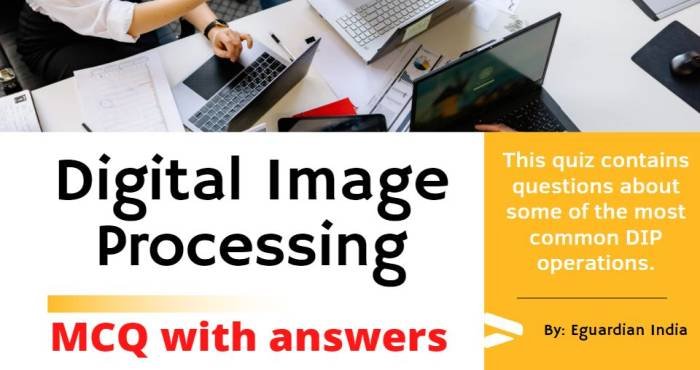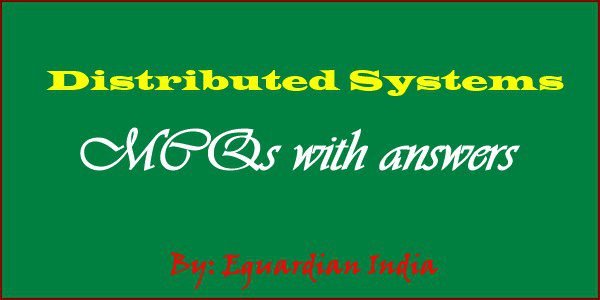Core Java Multiple Choice Questions with Answers pdf
Core Java Multiple Choice Questions with Answers pdf | Java mcq questions with answers pdf. Core Java MCQ are useful for the preparation of academic and competitive exams.

What is Core Java
Core Java is the foundation of Java programming language. It’s a set of standard libraries and APIs that constitute the core part of the Java platform. Core Java provides essential functionalities for developers to write robust, secure, and scalable software applications.
One of the most crucial aspects of Core Java is that it can run on any operating system that has a compatible JVM (Java Virtual Machine). This means that once a developer writes code in Core Java, they can easily deploy it across different platforms without worrying about compatibility issues.
In addition to this, Core Java also encompasses features such as multithreading, exception handling, networking capabilities, and much more. These functionalities ensure that developers have all the tools necessary to create sophisticated software applications with ease.
Overall, understanding what Core Java is and how it works is an essential aspect for any aspiring or experienced developer looking to build powerful applications using this popular programming language.
Core Java Multiple Choice Questions with Answers
1. Java is related to C++, which is a direct descendent of C.
1. true
2. false
2. Much of the character of Java is inherited from languages ___
1. C
2. C++
3. all of the above
4. none of the above
3. Java was conceived by ___ at Sun Microsystems, Inc. in 1991.
1. James Gosling
2. Patrick Naughton
3. Chris Warth and Ed Frank
4. all of the above
4. Java language was initially called “Oak” but was renamed “Java” in 1995.
1. Correct
2. Incorrect
5. Java can be used to create two types of programs: applications and ___
1. applets
2. servlets
3. both 1 and 2
4. none of the above
6. The output of a Java compiler is not executable code. Rather, it is byte code.
1. Valid statement
2. Invalid statement
7. Bytecode is a highly optimized set of instructions designed to be executed by the Java run-time system, which is called the ___
1. JVM
2. IDE
3. working environment
4. all of the above
8. JVM stands for ___
1. Java Virtual Machine
2. Joint virtual machine
3. java virtual means
4. joint virtual minute
9. JIT stands for ___
1. Just In Temporary
2. Just In Time
3. Jump In Time
4. joke in Time
10. Java was not designed to be source-code compatible with any other language.
1. true
2. false
11. Java was designed to meet the real-world requirement of creating interactive, networked Programs
1. correct
2. incorrect
12. Java enables the creation of cross-platform programs by compiling into an intermediate representation called ___
1. code
2. intermediate code
3. Java byte code
4. none of the above
13. Remote Method Invocation (RMI). This feature brings an unparalleled level of abstraction to___ programming
1. socket
2. client/server
3. c++
4. C
14. ___programs carry with them substantial amounts of run-time type information that is used to verify and resolve accesses to objects at run time.
1. C++
2. C
3. Java
4. all of the above
15. JDBC stands for ___
1. Java Database Connectivity
2. Joint Database connection
3. Just Dependent component
4. none of the above
16. ___ which allows programs to access SQL databases
1. JVM
2. JDBC
3. JNI
4. IDE
17. JNI means ___
1. Java Native Immediate
2. Java Normal Interface
3. Java Native Interface
4. Joint Normal Interface
18. ___ is a set of user interface components that is implemented entirely in Java
1. intermediate code
2. Byte code
3. Swing
4. Servelets
19. Collections are groups of objects. Java 2 provides several types of collections, such as ___, for your use. Collections offer a new way to solve several common programming problems.
1. linked lists
2. Dynamic arrays
3. Hash table
4. all of the above
20. Common Object Request Broker Architecture means CORBA
1. True
2. false
21. ORB stands for ___
1. Object Request Broker
2. On-Line response byte
3. Off-line request broker
4. Object response byte code
22. IDL means ___
1. Immediate Definition Language
2. Interface Digital Language
3. Interface Definition Language
4. Internet Dynamic Language
23. When Java source code is compiled, each individual class is put into its own output file named after the class and using the .class extension.
1. True
2. False
24. Java is not case sensitive /portable language
1. Correct statement
2. Incorrect statement
25. Java allows two or more statements to be grouped into blocks of code, also called ___
1.code
2. blocks.
3. code blocks
4. none of the above
26. Java is a free-form language. This means that you do not need to follow any special indentation rules.
1. valid
2. Invalid statement
27. The most commonly used separator in Java is the ___
1. comma
2. semicolon
3. single quotes
4. Double quotes
28. Java defines eight simple (or elemental) types of data: byte, short, int, long, char, float, double, and boolean.
1. True
2. False
29. Java allows variables to be initialized ___
1. statically
2. dynamically
3. both of the above
4. none of the above
30. each native method is ___-and operating-system-dependent
1. monitor
2. CPU
3. printer
4. webserver
31. The ability to create robust programs was given a ___ priority in the design of Java.
1. low
2. high
3. medium
4. all of the above
32. Java Virtual Machine is an attempt to the goal that was “write once; run anywhere, any time, forever.”
1. True
2. False
Qs33. Java is designed for the distributed environment of the Internet because it handles ___ protocols
1. TCP
2. IP
3. HTTP
4. both 1 and 2
34. ___ is the mechanism that binds together code and the data it manipulates and keeps both safes from outside interference and misuse.
1. Inheritance
2. Polymorphism
3. Encapsulation
4. Multithreaded
35. A ___ defines the structure and behaviour (data and code) that will be shared by a set of objects.
1. Class
2. Objects
3. group of objects
4. Inheritance
36. The code that operates on that data is referred to as ___
1. member methods
2. methods.
3. both 1 and 2
4. none of the above
37. Inheritance interacts with encapsulation as well
1. True
2. False
38. Polymorphism allows you to create ___
1. clean
2. sensible
3. readable, and resilient code
4. all of the above
39. ___ allows you to migrate your implementations over time without breaking the code that depends on the public interface of your classes.
1. Encapsulation
2. polymorphism
3. Portability
4. none of the above
40. In Java, a source file is officially called a ___
1. runtime unit
2. compilation unit
3. dynamic unit
4. static unit
41. Java was designed to meet the real-world requirement of creating ___ programs. To accomplish this, Java supports ___ threaded programming, which allows you to write programs that do many things simultaneously.
1. interactive, multi
2. networked, uni
3. interactive and networked, multi
4. web-enabled, dual
42. Java enables the creation of cross-platform programs by compiling into an intermediate representation called Java___. This code can be interpreted on any system that provides a ___
1. bytecode, Java Virtual Machine.
2. code, IDE
3. intermediate code, JNI
4. bytecode, JNI
43. Java programs carry with them substantial amounts of ___ time type information that is used to verify and resolve accesses to objects at ___ time
1. run, run
1. compile, run
2. run, compile
3. compile, compile
44. The concept of ___is often expressed by the phrase “one interface, multiple methods.” This means that it is possible to design a generic interface to a group of related activities. This helps reduce ___–by allowing the same interface to be used to specify a general class of action
1. polymorphism, simplicity
2. Inheritance, complexity
3. polymorphism, complexity
4. Multithreading, complexity
45. From ___, Java derives its syntax object-oriented features were influenced by___
1. C, C++
2. C#, C++
3. java script, C#
4. VB.net, C
46___and others began work on a portable, platform-independent language that could be used to produce code that would run on a variety of CPUs under differing environments. This effort ultimately led to the creation of ___
1. Gosling, Java.
2. Dennis, C++
3. Gosling, java
4. Dennis, C
47. OOP is a programming methodology that helps organize complex programs through the use of inheritance,___ and ___
1. encapsulation, polymorphism
2. multithreading, data abstraction
3. Data hiding, encapsulation
4. polymorphism, data hiding
48. Java is also a ___ language. Java derives much of its character from ___and C++.
1. Programmer’s, C
2. system’s, C++
3. operating system, Visual Basic
4. programmer’s, Java
49. (i) Java is cohesive and logically not consistent Language. (ii) Java gives the programmer’s, full control.
1. (i)False (ii)True
2. (i)True (ii)False
3. (i)False (ii)False
4. (i)True (ii)True
50. (i) Java is not a language with training wheels. It is a language for professional programmers
(ii) Java as simply the “Internet version of C++.”
1. (i)False (ii)True
2. (i)True (ii)False
3. (i)False (ii)False
4. (i)True (ii)True
Download Core Java Multiple Choice Questions with Answers pdf
You may also like Human Computer Interaction Tutorials
Conclusion
The Core Java Multiple Choice Questions with Answers pdf has been an invaluable resource for anyone who wishes to learn more about this popular programming language.
It provides clear and concise questions that are great for reinforcing existing knowledge or for testing one’s understanding of the topics covered.
Thanks for visiting our website, if you like the post on Core Java Multiple Choice Questions with Answers pdf please share on social media.





